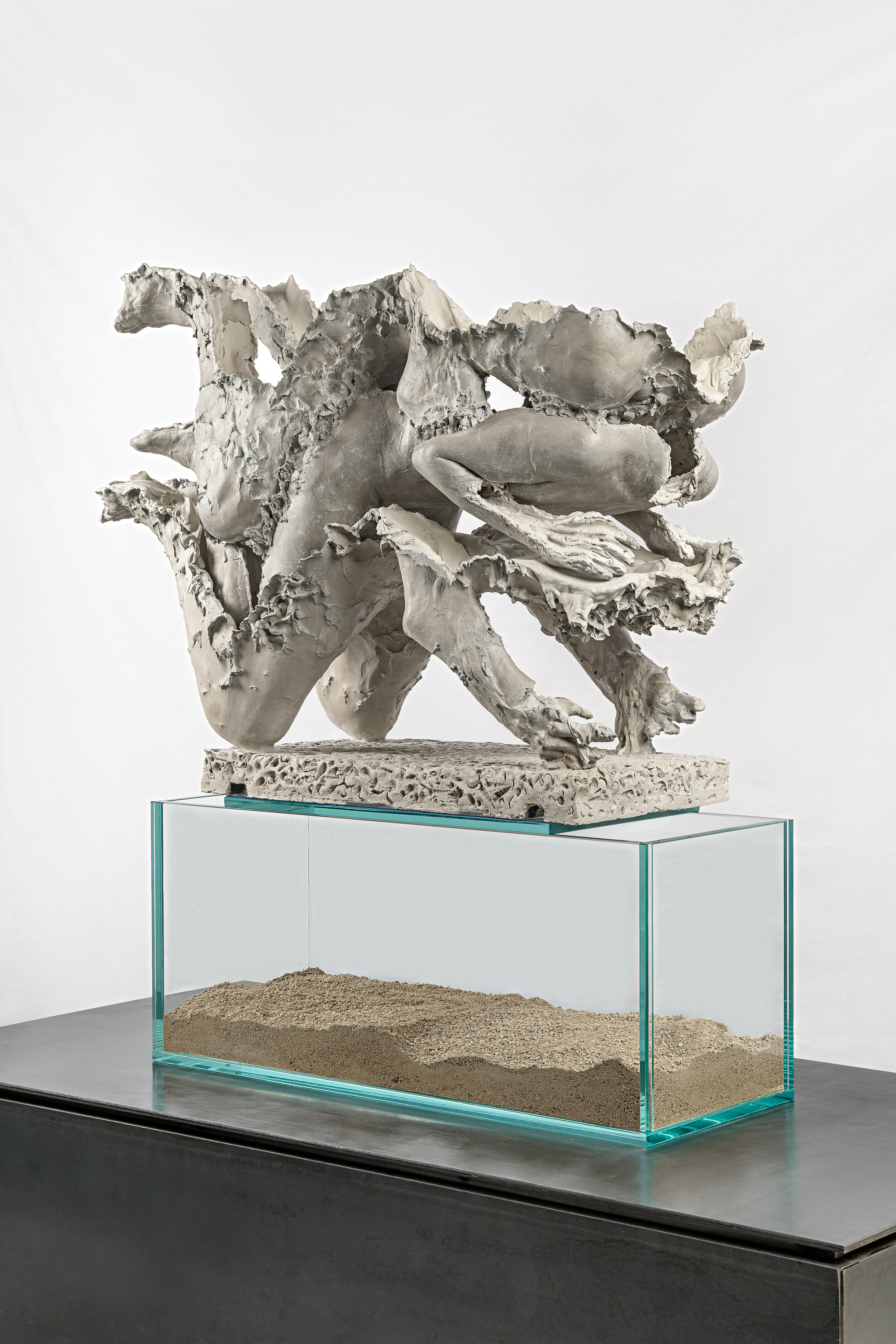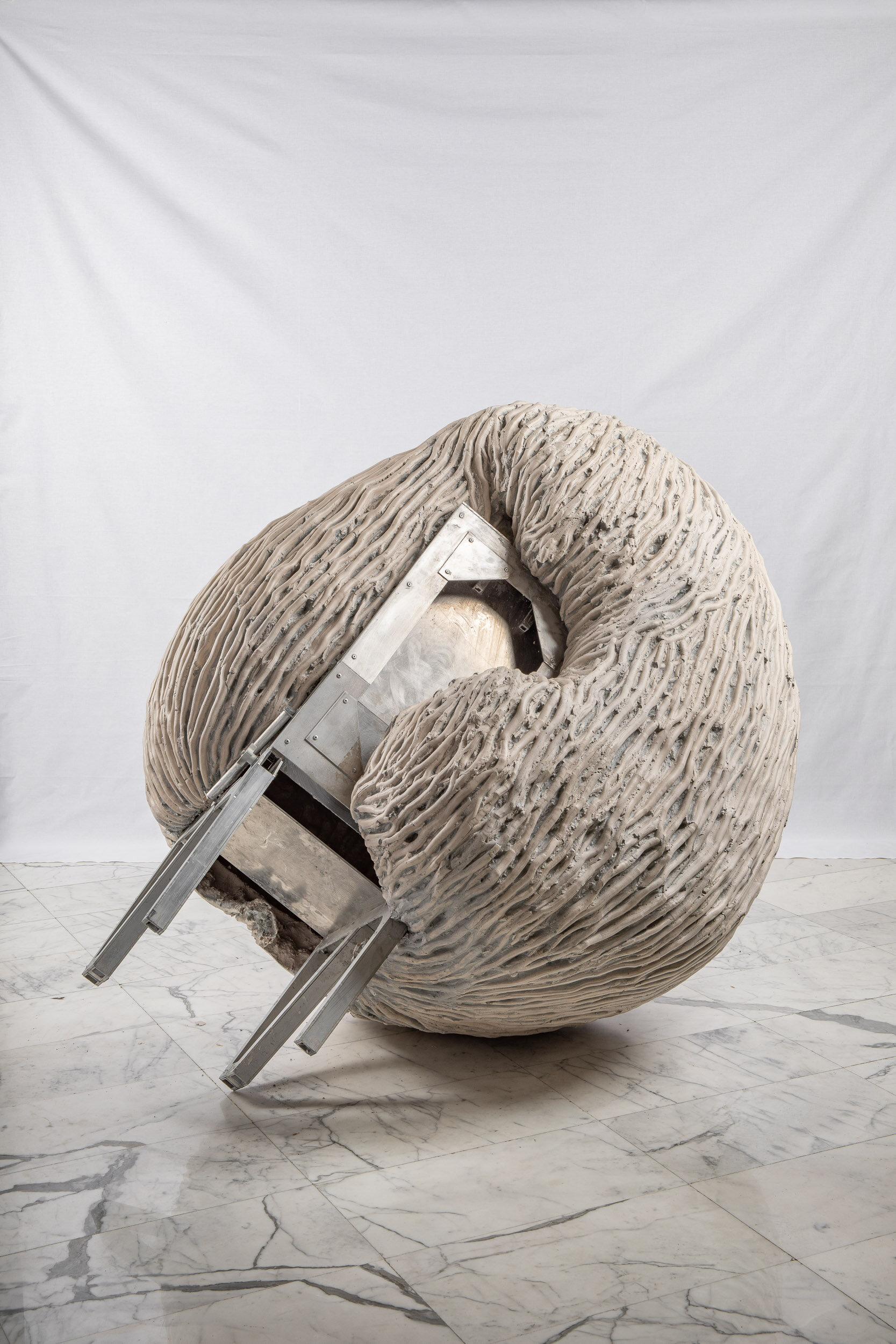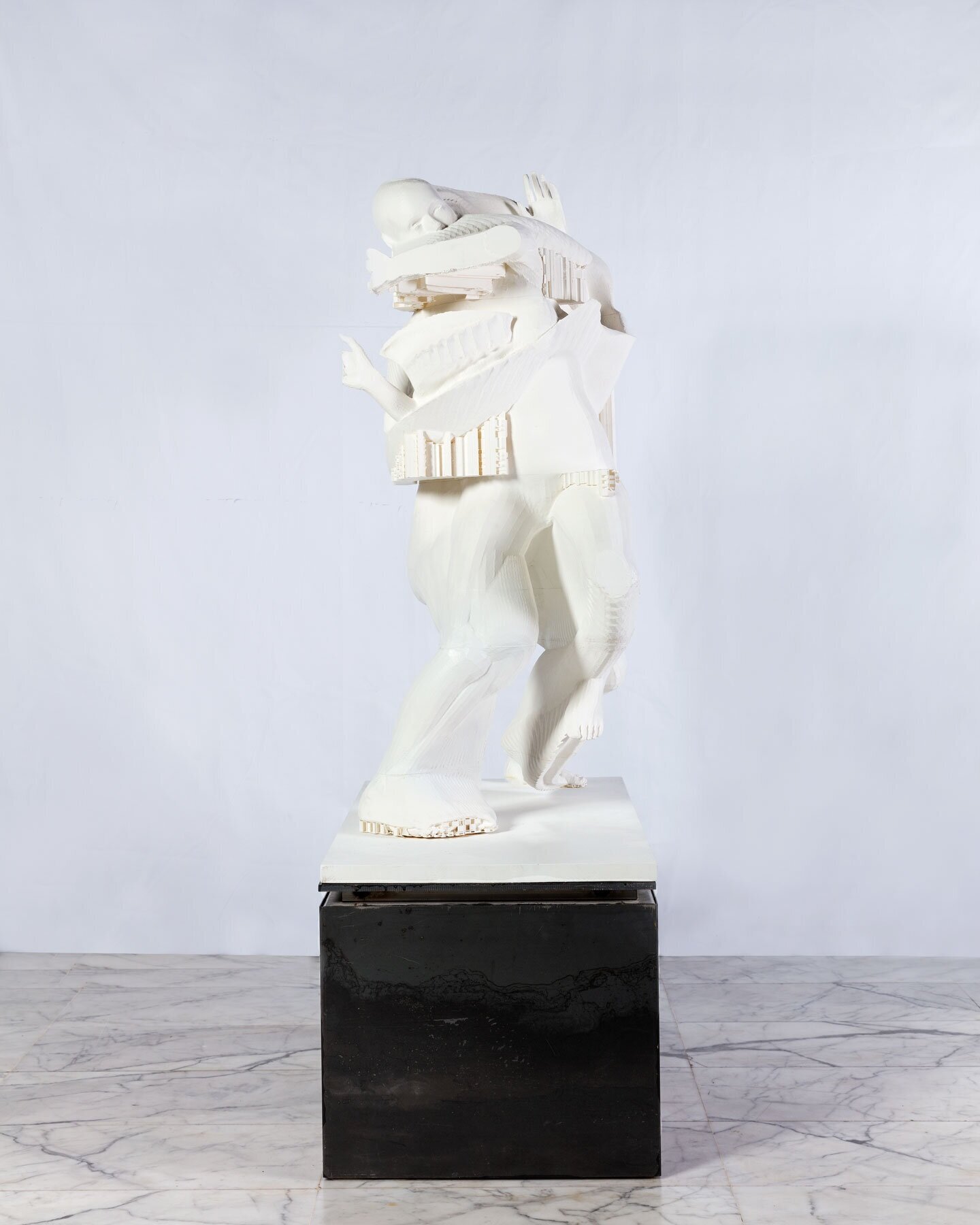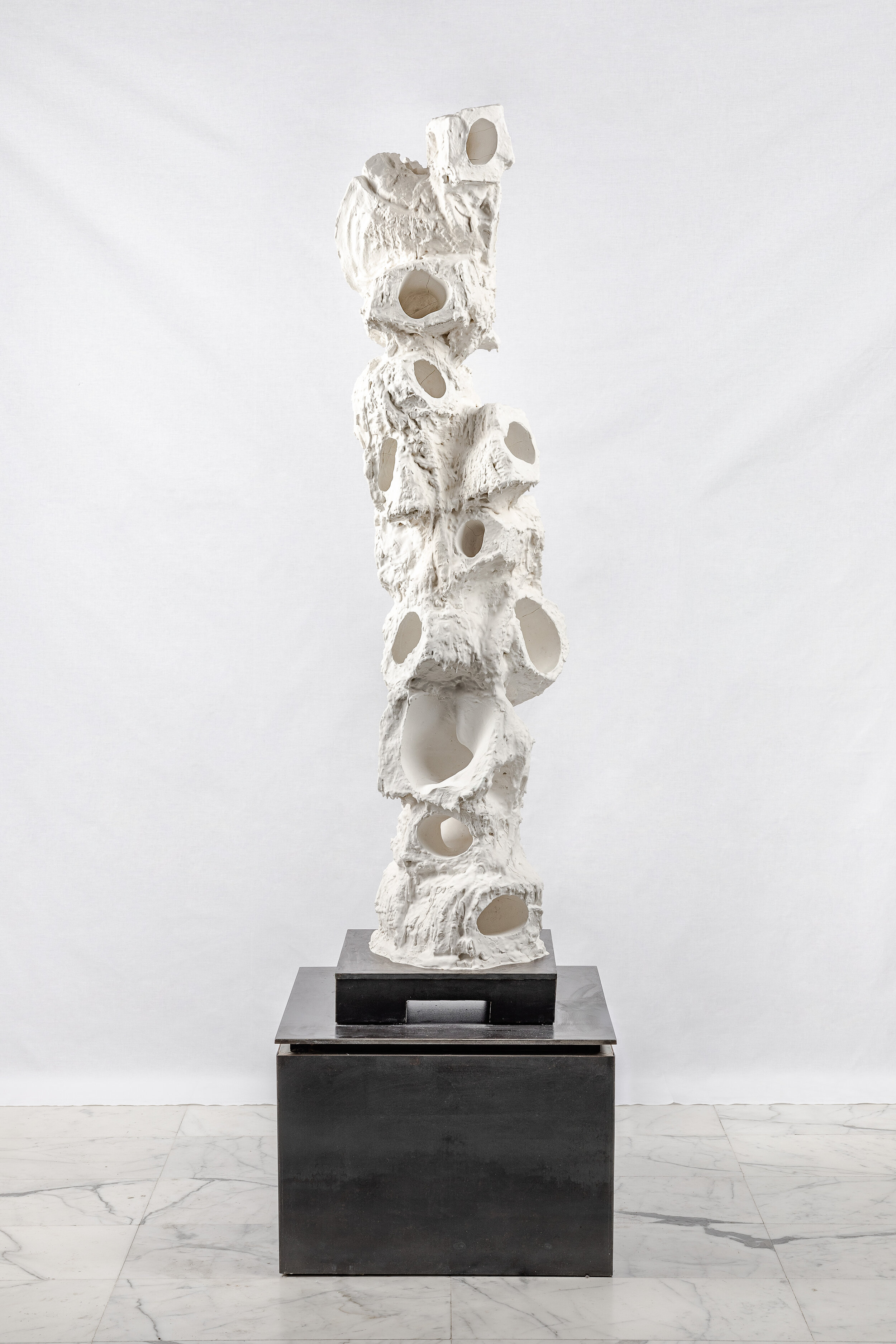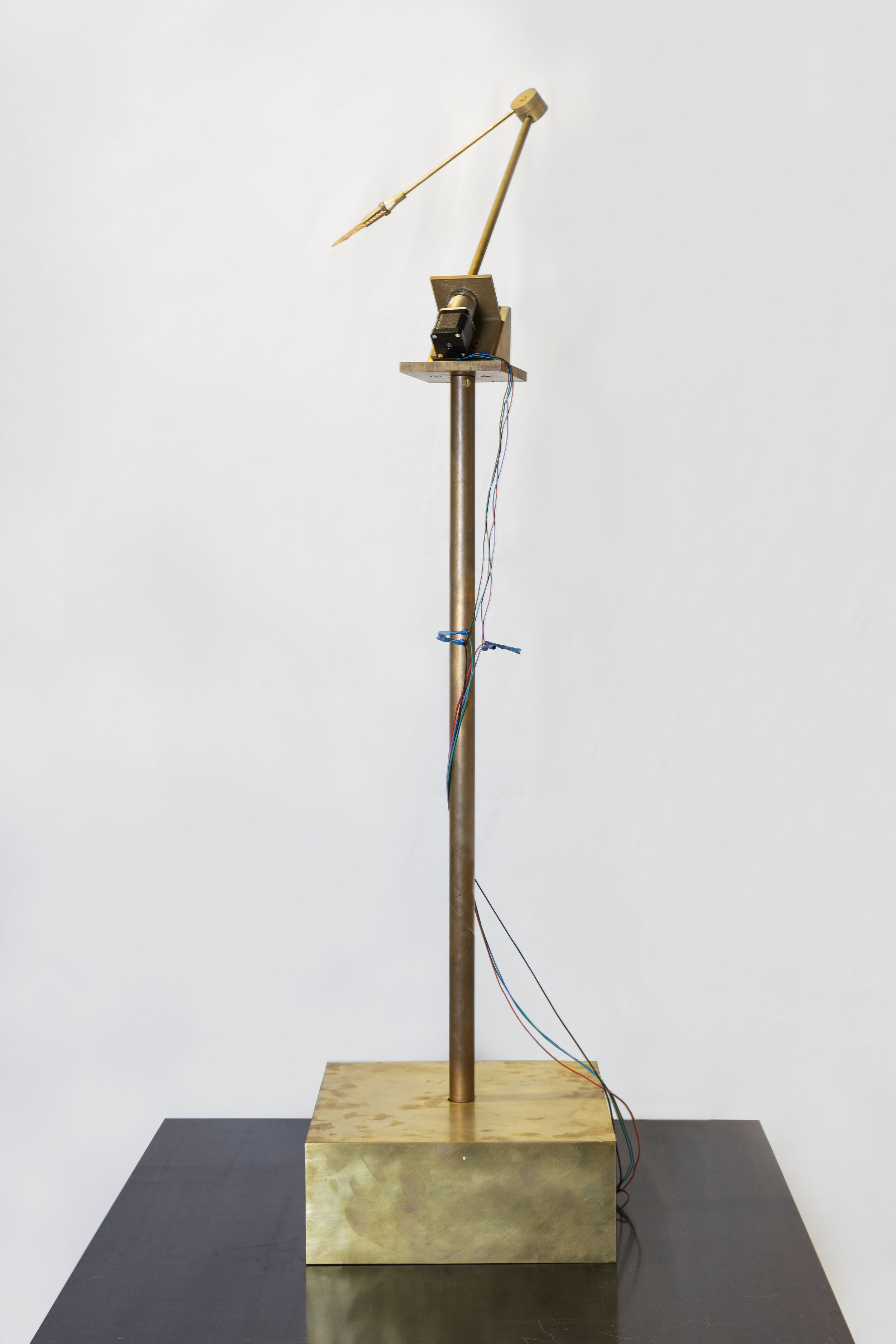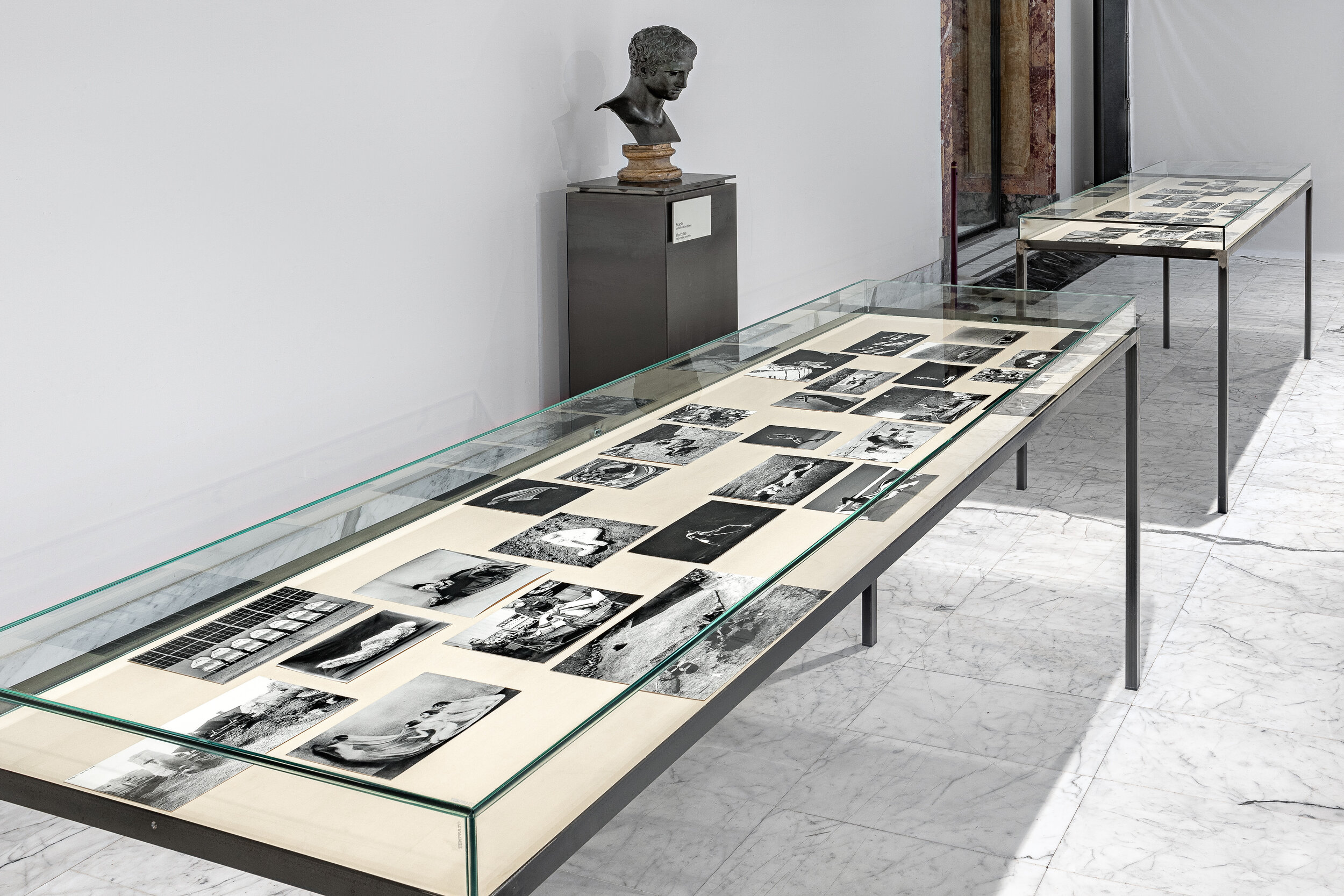Orogenesis, National Archaeological Museum of Naples, Naples, Italy
OROGENESIS, 2019, Exhibition View
Orogenesis, National Archaeological Museum of Naples, Naples, Italy
In her complex and expressive work, Cerqueira Leite re-envisions the human body through acts of transformation. She does this through a subtle choreography between the force of the body and the materials it presses against; exploring interior spaces as manifested by movement and gestures. For this exhibition Leite takes the calchi – the plaster cast bodies excavated in Pompeii - as a starting point. New sculptures are framed by a contemporary fear of annihilation by nature, the relationship of Western culture to Roman history and its archaeological evidence. The exhibition takes in the National Archaeological Museum’s iconic Villa dei Papyri rooms, among sculptures salvaged from Herculaneum and artefacts from Pompeii.
The contracted position in which the plaster-cast bodies excavated in Pompeii since 1863 are found is product of an involuntary pose that the human body assumes when exposed to intense heat. Forensically known as the pugilistic attitude, this pose is uncannily similar to a keystone of Martha Graham's technique for Modern dance: the 'contraction'. The sculptures and photographic work presented in Orogenesis connect these two formal figurative references with the standard position of the free-floating body as described by NASA. The neutral body posture of a human in zero gravity is identical to the pose of Pompeii’s calchi and the modern dance ‘contraction’.
Artworks in this exhibition investigate both ancient and recent past, and human hopes for the future through three disparate narratives of discovery tied together by a contracted body pose. Leite has partnered with MIT Professor Emeritus Steven Dubowsky, to develop a kinetic sculpture that constantly points in the direction that the Earth is traveling, highlighting our constant involuntary motion through space. For Species-Specific the dancer Meredith Glisson performed a series of choreographed ‘fight or flight’ responses as she was recorded in a motion capture studio, generating data for a 3D printed sculpture. For her major sculpture Anthropometry, Leite refers to NASA's anthropometric ‘grasp-reach’ studies, which show what an astronaut can reach while firmly strapped to a Space Shuttle chair,creating her reinterpretation of the Vitruvian sphere. This exhibition also includes a researched assemblage of photographs from the archives of Pompeii's Archaeological Site, NASA, and the Martha Graham Dance Company, which further an understanding the work.
Looking at the cultural and political legacies associated with visiting Pompeii and Herculaneum from a contemporary perspective, Leite creates highly suggestive works. Through the lens of the existential threat of climate change and geopolitical tectonic shifts, the sculptures in Orogenesis suggest a historical undercurrent of pressure-driven change played out on the human body. In this exhibition, roughly cast bodies in the pugilistic attitude appear to fuse into geological strata, while the traces of absent figures leave porous plaster forms, suggesting dense waves of time.
Juliana Cerqueira Leite (b.1981, Brazilian) lives and works in Brooklyn, New York. She was awarded the Pollock-Krasner Foundation Grant in 2019, the Furla Art Prize at the 5th Moscow International Young Art Biennial in 2016, and the Kenneth Armitage Sculpture Prize in 2006. She holds a MFA in sculpture from Slade School of Fine Art, UCL. Her work has been exhibited at Sculpture Center in New York; Instituto Tomie Ohtake in Brazil; The Venice Biennale Antarctic Pavilion; The Vancouver Biennale; Cass Sculpture Foundation in West Sussex; The Illmin Museum in South Korea, The Approach in London and Art Public at Art Basel Miami Beach.
The production of the artworks in this exhibition were made possible by a Pollock-Krasner Foundation Grant. This exhibition is supported by ALMA ZEVI (Venice), together with the Juliana Cerqueira Leite Exhibition Circle. The accompanying publication is supported by TJ Boulting (London) and published by Trolley Books. It contains essays by Mario Codognato, Dehlia Hannah, and Nadim Samman; it will be launched on the 17th of July at the National Archaeological Museum in Naples, with the support of Galeria Casa Triângulo (São Paulo).
OROGENESIS, 2019, Exhibition View
OROGENESIS, 2019, Exhibition View
OROGENESIS, 2019, Exhibition View
Contraction 1 and 2
Dental plaster, steel, acrylic, wax
160 x 40 x 40 cm
2019
Attitude 1 and Attitude 2
Steel and glass vitrine, black and white photographs, fabric
100 x 210 x 75 cm
2019
Calcify
Aquaresin, hydrocal, steel, glass, limestone sand, glass fiber, pigment, clay
140 x 45 x 100 cm
2019
Species Specific_005 (fight)
3D printed PLA, supports
112 x 50 x 90 cm
2019
Atlas
Brass, rotation motor, Neolithic Dalton point, electronics, wood
120 x 40 x 40 cm
2019
Contraction 3
Dental plaster, steel, aluminium, acrylic, burlap, wax
160 x 80 x 50 cm
2019
Calcify
Aquaresin, hydrocal, steel, glass, limestone sand, glass fiber, pigment, clay
140 x 45 x 100 cm
2019
Contraction 3
Dental plaster, steel, aluminium, acrylic, burlap, wax
160 x 80 x 50 cm
2019
OROGENESIS, 2019, Exhibition View













